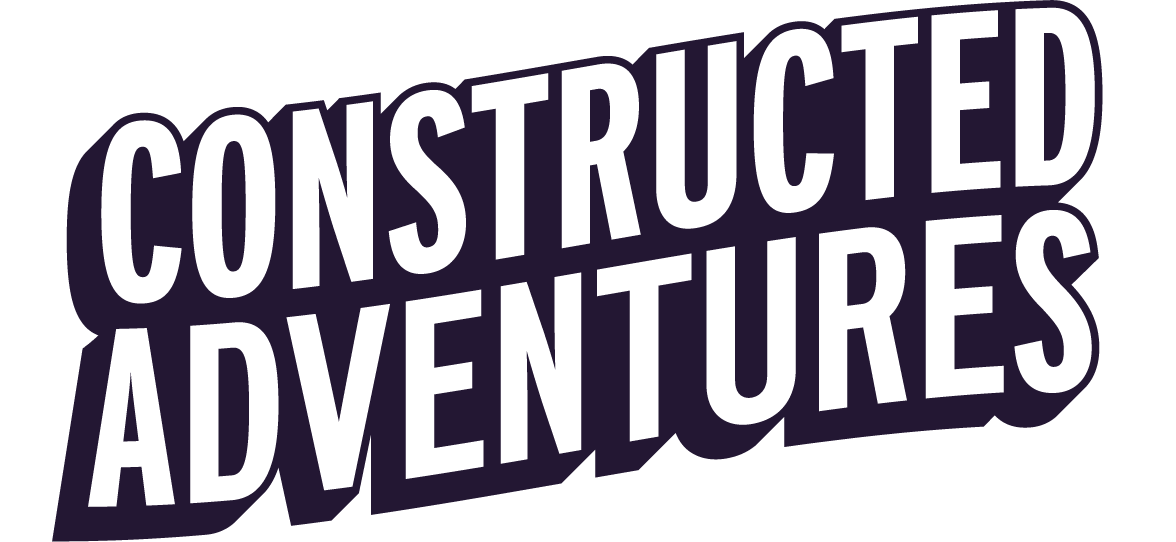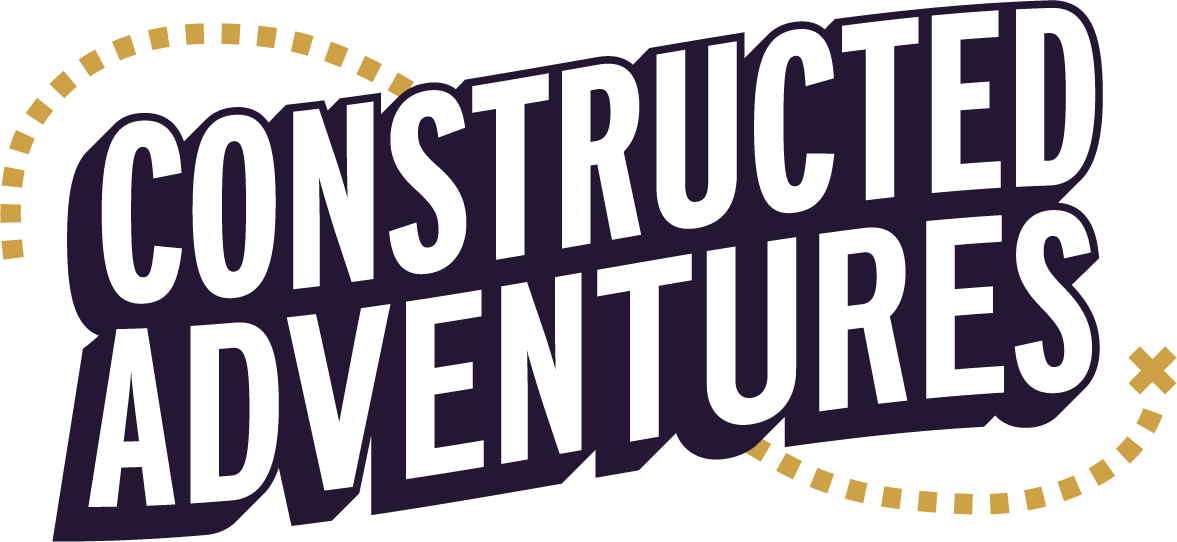How to plan a treasure scavenger hunt based on group size
One of the first decisions you have to make when designing a puzzle adventure is the structure of the event. The structure helps you understand how many gambits, puzzles, or activities you'll need, how you plan to guide the players through them, and what kind of conclusion you're aiming for. Some structures fit better for certain group sizes. The highly choreographed, intricately planned adventure you might make for a solo player isn't feasible to offer to a group of 100 simultaneous players. Activities that are accessible and thrilling for a team of players may not be very fun for solo players. Starting with an understanding of your intended group and team size is critical during your initial planning.
Note: We use the term "Gambit" meaning "anything to propel the player(s) forward. This can be a puzzle, task, or physical challenge. Whatever fits the vibe!
Groups play alongside each other, Teams work together.
The total number of simultaneous players who will play your adventure is the group size. Groups may be divided up into teams of smaller sizes or even solo "teams" of single players. The group size can help you figure out how long the event should be, estimate the speed that players will progress through it, help you determine how many props you’ll need, and guide you on selecting the right venues for the event to happen in or around. The team size has a big impact on the style and complexity of the puzzles you can create, as teammates can collaborate and share ideas.
There's a reason most Adventures are intended for teams of four or five players. If your team sizes are too small, it's easier to accidentally stump a team. If you have a puzzle based around morse code, for example, and no one on a team has ever heard of it, they might get stumped. Larger teams reduce this risk, because it's more likely that someone on the team will understand each puzzle. If your teams are too large, you run into the opposite problem, where a few players on the team do all the puzzling and the rest feel like a third-wheel. For larger teams, it's important to have puzzles and gambits that require multiple people to work on at once, instead of something that just one person figures out.
The Competition Consideration
Some structures are competitive, meaning only some teams or players will win. Others are collaborative, where the group succeeds together. A competitive adventure often feels like a race, and a cooperative one feels like a marathon. As a general rule of thumb, competitive structures are better for motivating larger group sizes, and cooperative structures make for more memorable events for smaller group sizes. If you plan to have prizes, competitive structures make it easier to have a few flashy prizes for top players, but run the risk of some players feeling left out. If you have a prize for every player who finishes the adventure, it's easier to give players a sense of accomplishment, but high-performance players may feel like their skills went unrecognized. Of course, these are two ends of a spectrum, many events include both competitive and cooperative structures. Here are a few of the most popular puzzle event structures. Every one of these structures could be used with any size group but they lend themselves to certain sizes better than others.
Single Path Adventures
Team size: 1 to 6
For very small groups of one to six players, Single Path Adventures are the way to go. In these adventures, a story is leading players through a fixed sequence. Each step reveals more of the story, and points the way to the next step, building up to a big conclusion. These can be very memorable events, and it's easier to make custom props and prizes for small groups. This is an easier structure to run too, because the group moves through the puzzles one at a time. The drawback to this structure is that if the group gets stuck on a puzzle, they have nothing else to do. Be ready to intervene with hints or alternate ways to progress.
Parallel Path Adventures
Team size: 4-12
For slightly larger groups of four to twelve players, a Parallel Path Adventure gives you a little more flexibility. These adventures are still driven by a story, but at any given time the group has multiple different paths for progression. Players are able to focus on the puzzles that best suit them. If one path turns out to be harder than the rest, more players will join in trying to solve it as they finish the other paths. Use narrative choke points where everyone comes together from time to time. This helps you with pacing, gives the team a good chance to mix up sub-groups, and gives a chance for everyone to celebrate each other's contributions or learn about the puzzles they didn't work on. Most puzzle hunts are in this style.
Hub Puzzle
Team size: 10+
For bigger cooperative groups, the Hub Puzzle is a good pick. In this structure, there's a central puzzle that starts off without enough information to complete. For example, a crossword puzzle with no clues. The team is introduced to the central puzzle, and told that they can earn information (like crossword clues) by completing other puzzles. Subgroups form naturally as players gravitate towards puzzles they are excited by, and every time a puzzle is solved it adds clear progress to the central puzzle. This structure allows a larger team to work together, but most players will only see a subset of the puzzles you plan. It's wise to plan for the Hub puzzle to be solved with less than the total number of additional puzzles. When most of the puzzles are solved, there should be enough info for a clever team to solve the Hub puzzle. This will feel like a well-earned "shortcut". To continue the example, you can often figure out the last few missing words in a crossword puzzle even if a few clues are missing, because the rest of the filled in puzzle provides enough to guess the last words. Clever teams will finish a little early, less clever teams will finish the full set of puzzles to make the Hub puzzle as easy as possible. Both will feel satisfied by the result.
Activity Competitions
Group Size: 15+
Team size: 1 to 6
For large groups (The Architect likes to call them “Big Group Games”), Activity Competitions are easier to run than any Adventure structure. Instead of a series of puzzles to solve, teams have a variety of activities they can participate in. While a few of these activities can be puzzles, it's best to cover a wider variety. Physical challenges, teamwork activities, performances and hidden object hunts are all great ways to make your event accessible to a broader group of players, and help you avoid the situation where each team relies on one power-solver. Teams complete activities during a set time limit, trying to earn as many points as possible. It's OK to plan more activities than any one team will be able to complete as it's better if teams always have something more to do. Teams can participate in the activities in any order, and everyone activity earns them points (or tokens, coins, gems, etc.) which are tallied at the end to determine the winning teams. To add a little extra excitement, award tokens of various weights, and determine the winning team by whose tokens weigh the most. This discourages teams from figuring out their ranking during the activities, and encourages them to keep trying until time is up.
Universal Structures
In a pinch, there are a couple event structures that work for virtually any size of group. While these tend to have less story and theming, they are easier to run for groups with wide disparities in skills and energy.
Scavenger Hunts
The simplest version of a scavenger hunt is an Easter Egg Hunt. You show players what the item they are looking for looks like, then set them loose to find as many as they can. A more engaging version starts with a list of tasks to complete. Tasks can be activities or puzzles, usually a mix of both. It's common to ask teams to take pictures or videos proving each task was completed. Some examples are "take a picture of someone with a silly hat" or "find a statue taller than every player on your team". Ideally, your tasks will send the team to multiple locations within a large play area, so that you don't get a bunch of teams clumping together playing copycat. You can award prizes for the fastest teams to complete the list, or plan a prize for each team that succeeds in completing the list.
Puzzle Piles
A Puzzle Pile is like a Hub Puzzle, without the central hub. It's a bunch of different, unconnected puzzles set up with the goal to solve as many as possible within the time limit. If you just print off some generic crossword and sudoku puzzles, your players aren't going to be very excited. So the key to a good Puzzle Pile is a unique and varied puzzle selection with a strong theme tying them together.
Final Thoughts
Keep in mind the context of your adventure as you select a structure. For a short adventure during a child's birthday party, a Single Path Adventure keeps everyone together, while Activity Competitions keep everyone busy during larger parties or at corporate events. Hub Puzzles are great for older players who can self-organize and find the puzzles they like, like puzzle clubs. Parallel Path Adventures have the most checkpoints for story development if you're making an immersive experience. Any of these structures can be adapted to any size with enough effort, but starting with a structure suited to your event gives you a framework that is easier to flesh out.





